|
|
||
| Menu | VisualVoice / Step5 | |
|
About Artistic Vision People Teams Contact us Publications Media Images/Movies Opportunities Related Links |
Enabling the User to Create Vizeme MappingsUp to this point, vizeme mapping has been performed using a single map file, containing a set of vectors created by the author to approximately represent facial expressions for each phoneme. It would be useful, however, to enable each user of the DIVA system to construct their own faces, whether to improve upon the current faces, to fit the user's perception, or to vary the emotion of the face as desired. This is accomplished through the implementation of three interfaces using MAX/MSP, together forming a set of "Vizeme Tools" in the DIVA project: i) VizemeBuilder - enables the user to create individual facial expressions for each phoneme, and store PC values for these faces in vizeme files. The interfaces can be accessed from the "Vizeme Tools" drop-down menu in the DIVA main window. Each interface enables the user to create a specific type of file, and so they all share the following behaviours: i) Load - loads the selected file to the interface, checking first for unsaved changes and giving the user the option to save, if this is the case. VizemeBuilder 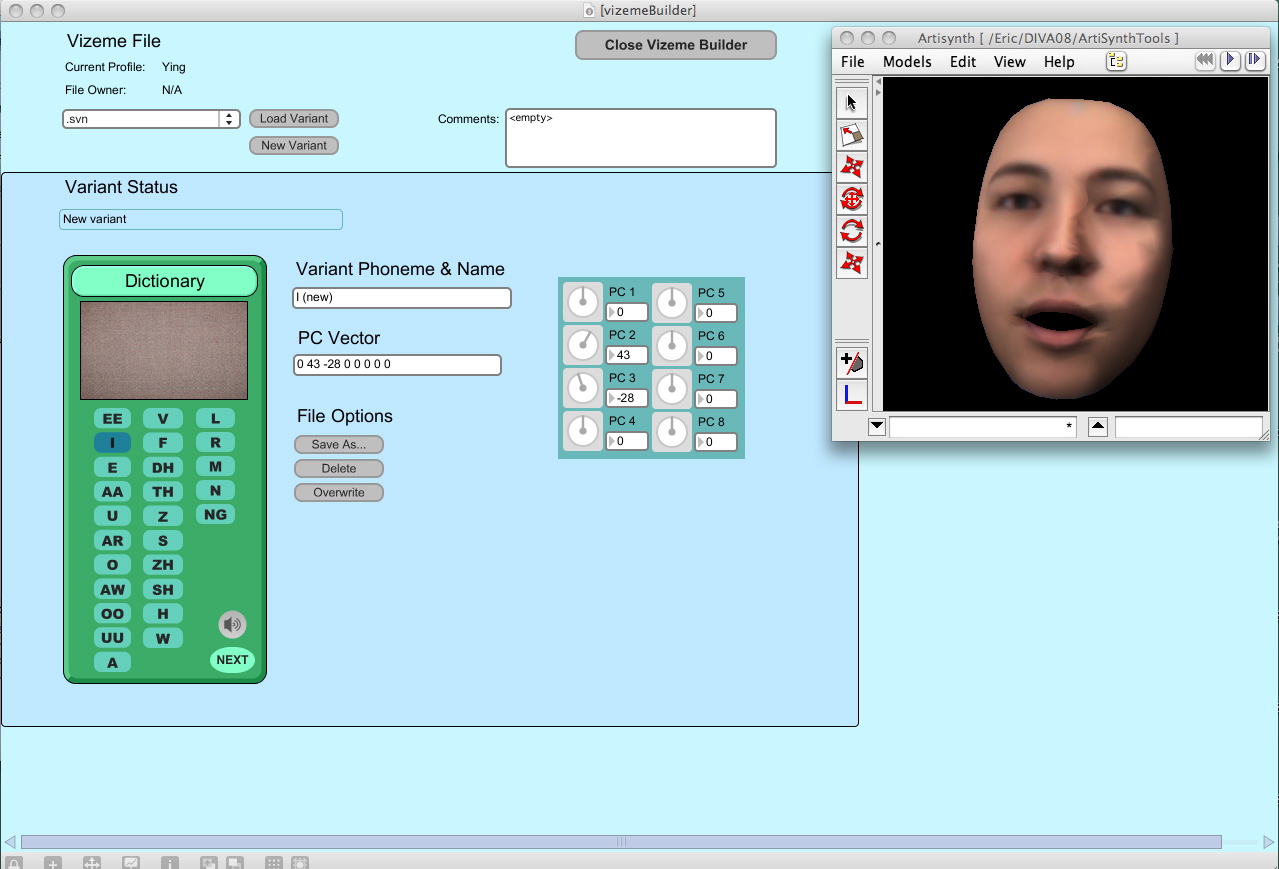 The Vizeme Builder interface launches the KuraFace model and connects to it upon initialization. By adjusting the eight knobs, the user can stretch the face along all 8 principal components, and view the effects. When the desired facial expression is obtained, the PC vector values can be saved to a vizeme file: 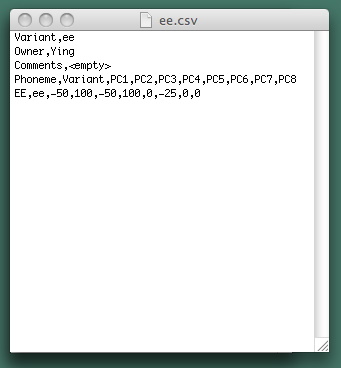 These files will then be parsed at performance time to load PC vectors. CreateVizemeDictionary 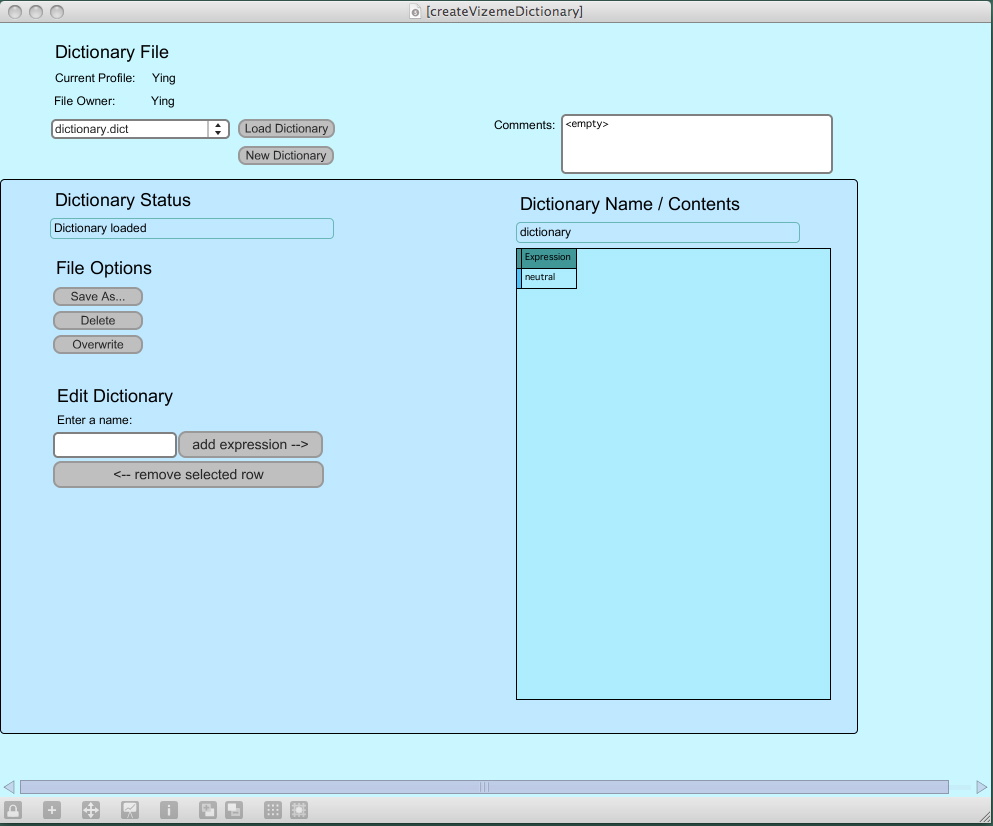 The Create Vizeme Dictionary interface allows the user to specify a list of expressions, or different facial emotions. As mentioned above, the extension of vizeme mappings to different facial emotions is not yet supported, and the process of this extension is described in "Future Work". Presently, dictionary files should only contain a single expression, and the file dictionary.dict is the default file: 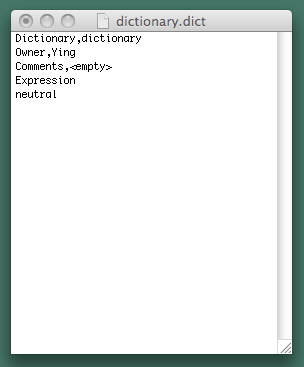 Dictionary files create categories of sorts for map files -- each map file must be based upon one of the existing dictionary files. CreateVizemeMap 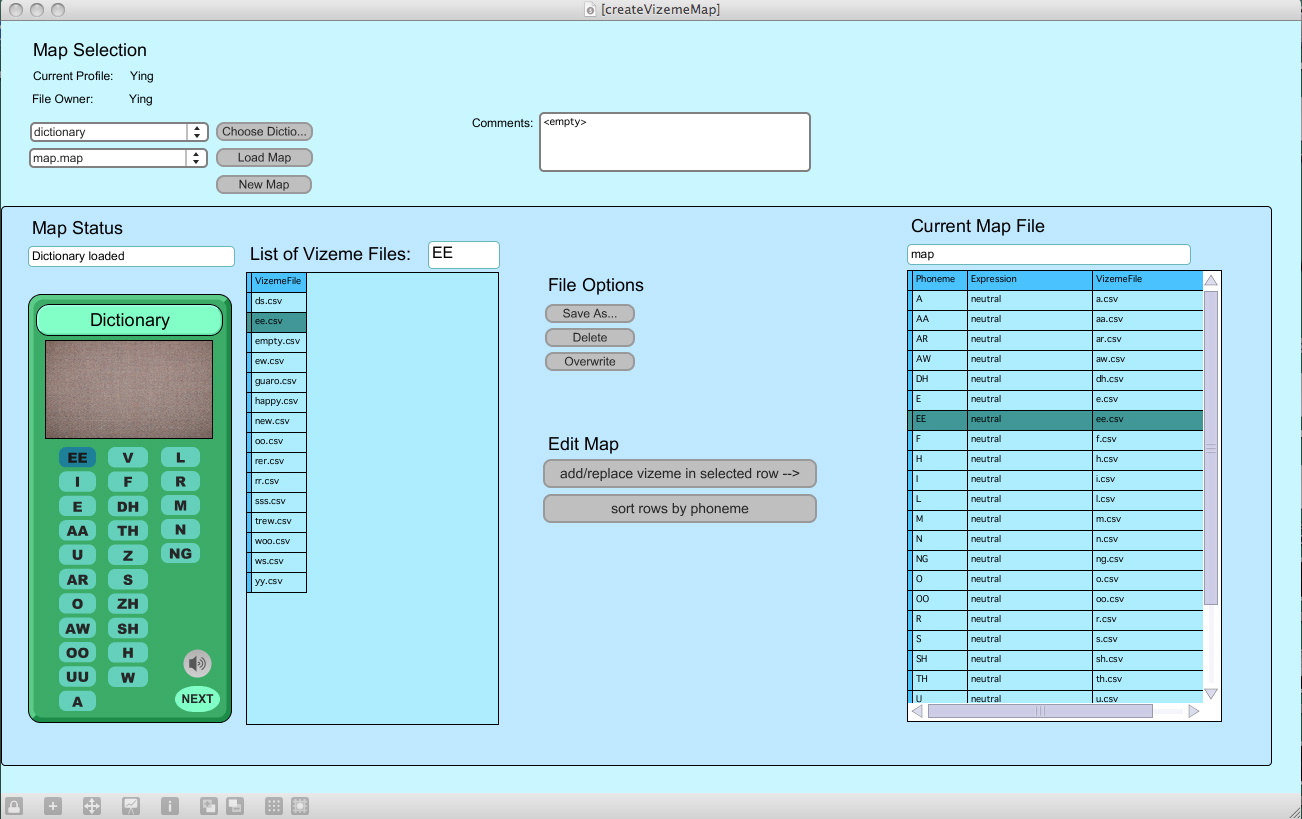 The Create Vizeme Map interface works in the following way: i) Choose Dictionary - select the desired file from the list of existing dictionary files - this will specify the expressions in map file entries, and brings up a list of map files for this dictionary. The existing default map file is map.map, shown below: 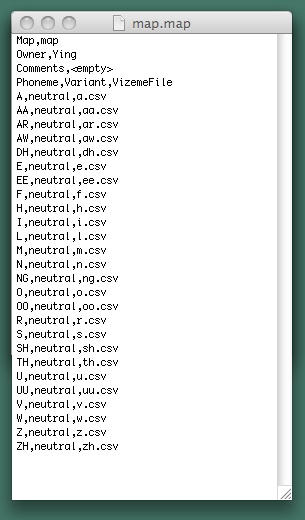 The map file associates each phoneme with a vizeme file, such that when it is loaded, the PC vector associated with each phoneme is loaded from the specified vizeme file. To summarize: i) Vizeme Tools consists of three interfaces in the DIVA project, accessed from the main window Next, step 6 describes how the map file is loaded at performance time. |
|
| View Edit Attributes History Attach Print Search Page last modified on August 21, 2008, at 08:33 AM | ||